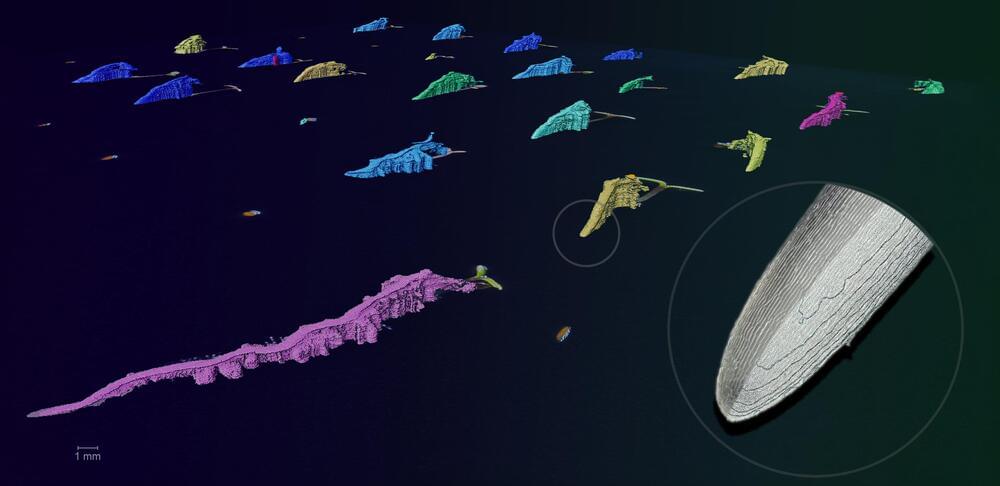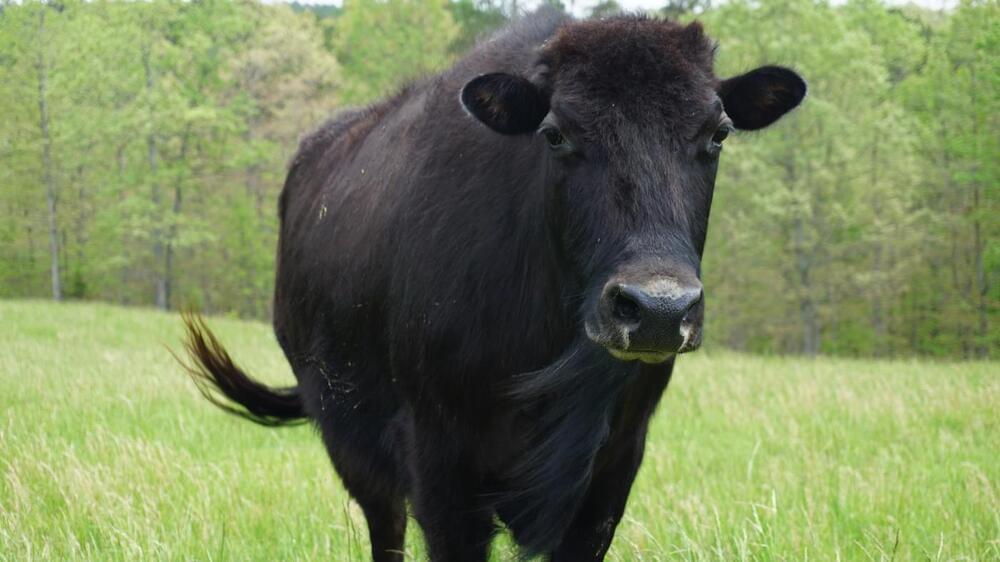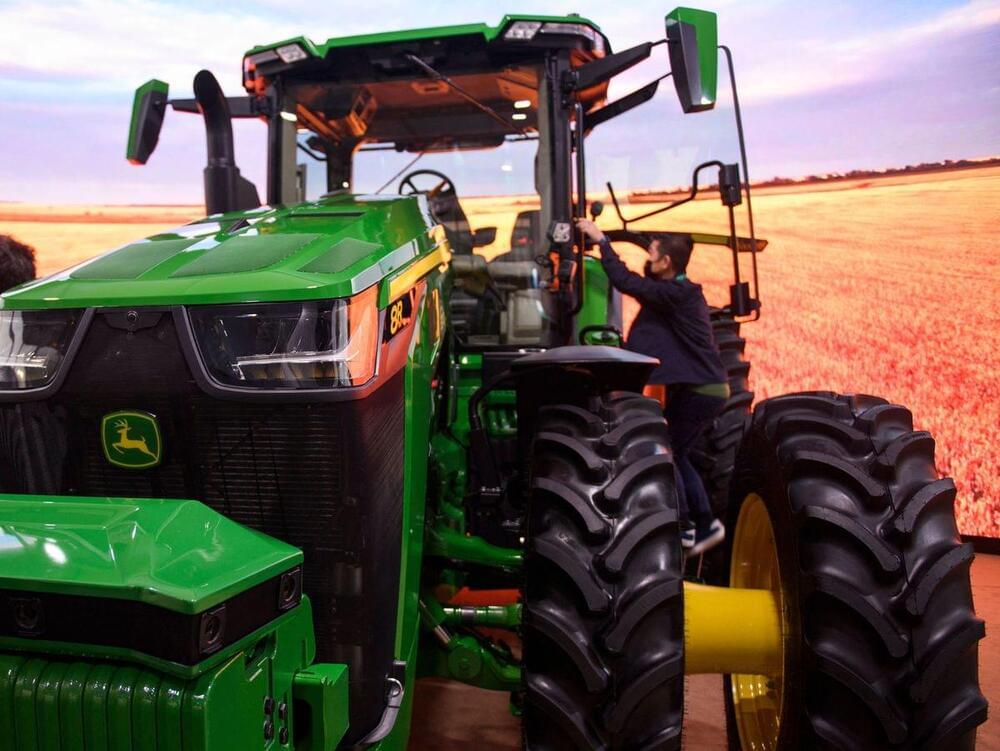New Zealand is introducing a flatulence tax on livestock farmers in an effort to reduce methane emissions.
Livestock is the country’s largest source of methane emissions. As a result, the government is introducing a tax to change farm practices.

What if we could look into the future to see how every aspect of our daily lives – from raising pets and house plants to what we eat and how we date – will be impacted by technology? We can, and should, expect more from the future than the dystopia promised in current science fiction. The Future Of… will reveal surprising and personal predictions about the rest of our lives — and the lives of generations to come.
SUBSCRIBE: http://bit.ly/29qBUt7
About Netflix:
Netflix is the world’s leading streaming entertainment service with 222 million paid memberships in over 190 countries enjoying TV series, documentaries, feature films and mobile games across a wide variety of genres and languages. Members can watch as much as they want, anytime, anywhere, on any internet-connected screen. Members can play, pause and resume watching, all without commercials or commitments.
The Future Of | Official Trailer | Netflix.
https://youtube.com/Netflix.
This docuseries explores surprising predictions about augmented reality, wearable tech and other innovations that will impact our lives in the future.

For plant biologists, understanding how plants grow and interact with soil is vital for selecting resilient crops that can efficiently take up water and nutrients. But how do you monitor what is happening underground?
To address this challenge, a team from KAUST has developed a low-cost system for imaging plant growth dynamics, noninvasively and at high throughput.
Unlike other imaging tools, which are costly and stationary, the new system called MutipleXLab, is modular, mobile and, at a low cost, can continuously monitor thousands of seeds, from germination to root development.

The old adage that oil and water don’t mix isn’t entirely accurate. While it’s true that the two compounds don’t naturally combine, turning them into one final product can be done. You just need an emulsifier, an ingredient commonly used in the food industry.
Yangchao Luo, an associate professor in UConn’s College of Agriculture, Health and Natural Resources, is using an innovative emulsification process for the development of a healthier shelf-stable fat for food manufacturing.
Luo is working with something known as high internal phase Pickering emulsions (HIPEs). High internal phase means the mixture is at least 75% oil. Pickering emulsions are those that are stabilized by solid particles.
It’s no longer enough to just eat healthy. One also needs to make sure our healthy eating is also healthy for the planet. There has been a great deal of interest and attention given to diets in the past years, especially as people were forced to fend for themselves at home. Diet fads come and go, but the ingredients we use have mostly remained the same, and the demand for meat-based products has only gone higher, not lower. Our food system isn’t just broken, but so is our mindset and expectations of an unlimited supply of materials to feed the planet at the expense of the planet itself. That definitely has to change, and a holistic kitchen system imagines how tomorrow’s diets won’t only be plant-forward but also planet-friendly.

Not that Thier should be more animals raised for meat.
But beefalo does have its opponents.
“We just don’t think there should be beefalo,” said Martha McFarland, farmland viability coordinator for the advocacy group Practical Farmers of Iowa. She also raises cattle and bison, but said she would never mix the two.
“Nature did just fine producing bison. It’s an excellent animal that also is good to eat, and mixing it with cows is not necessary and weakens the genetic line of the bison.”


Organic farmers are returning to an unusual tool in the fight against weeds — fire. Called ‘flame weeding’ the process involves either using a small, handheld flamethrower, or installing a pretty hardcore row of flamethrowers onto the front of a tractor and slowly driving through fields of crops singeing the weeds in between the rows.
Flame Engineering, Inc. specializes in developing and selling flame weeding equipment and says the technique is rooted in science. The company’s website explains that the technique is not about blasting the weeds to kingdom come, but rather about focusing on destroying cell structure.
“Flame weeding is what we like to call a ‘slow kill.’ Essentially, you are destroying cell structure in the plant leaf. The weed will no longer put energy toward growth (photosynthesis) taking the kill through the root system. YES, flame weeding will kill the roots too! Even on big weeds (over 6″), you will see a stunning effect and even a kill within a few days, depending on how established the root system is and how long the plant was exposed to heat.”

A model attributes the propagating bands that appear in a compressed porous medium to structural changes alone.
Porous media such as snow, sand, cereals—even bones—develop strikingly similar banded patterns when they’re squeezed. Those bands form when localized deformation zones propagate throughout the material. Understanding what triggers the universal and “material-agnostic” emergence of the bands is a common goal in disciplines including avalanche research, petroleum extraction, structural engineering, geophysics, and agriculture. Now, describing the phenomenon using a model based entirely on a collapsing-pore mechanism, Lars Blatny and his colleagues at the Swiss Federal Institute of Technology, Lausanne, and the University of Sydney, Australia, identify a common origin for these patterns. The result could lead to comprehensive continuum-mechanics models of porous media.
Blatny and his colleagues simulated a vertical 2D slice of an elastoplastic structure that was squeezed from above and below. The structure was perforated with regularly spaced square holes that composed 25% to 75% of its total area. By varying the solid area fraction and the structure’s elasticity and yield strength, the researchers examined how different porous structures deform when compressed at a constant speed. They identified six classes of compaction patterns and found that they could describe these classes entirely by two numbers that characterize the material’s properties and the speed at which the structure was compressed.